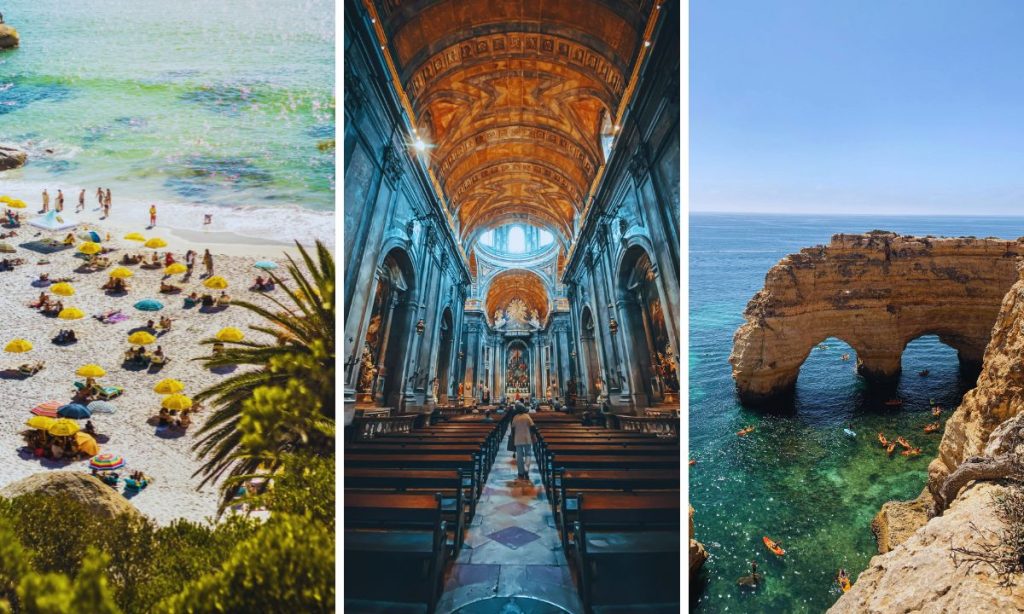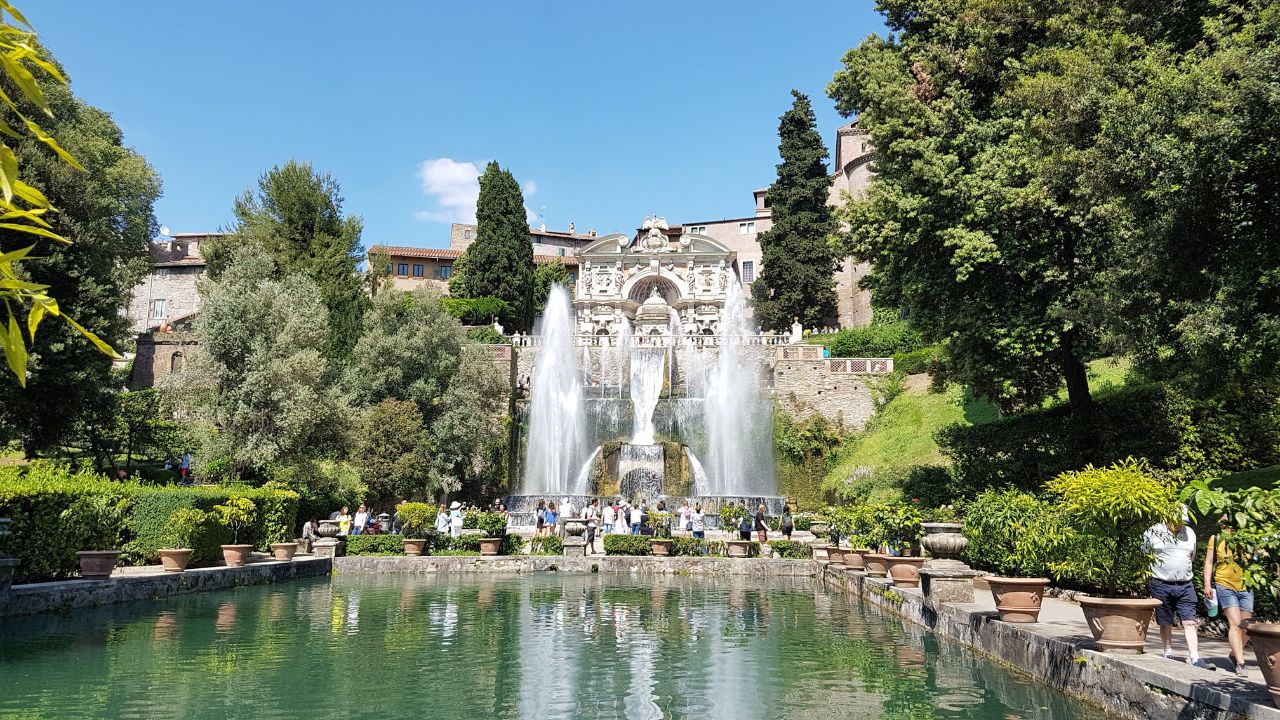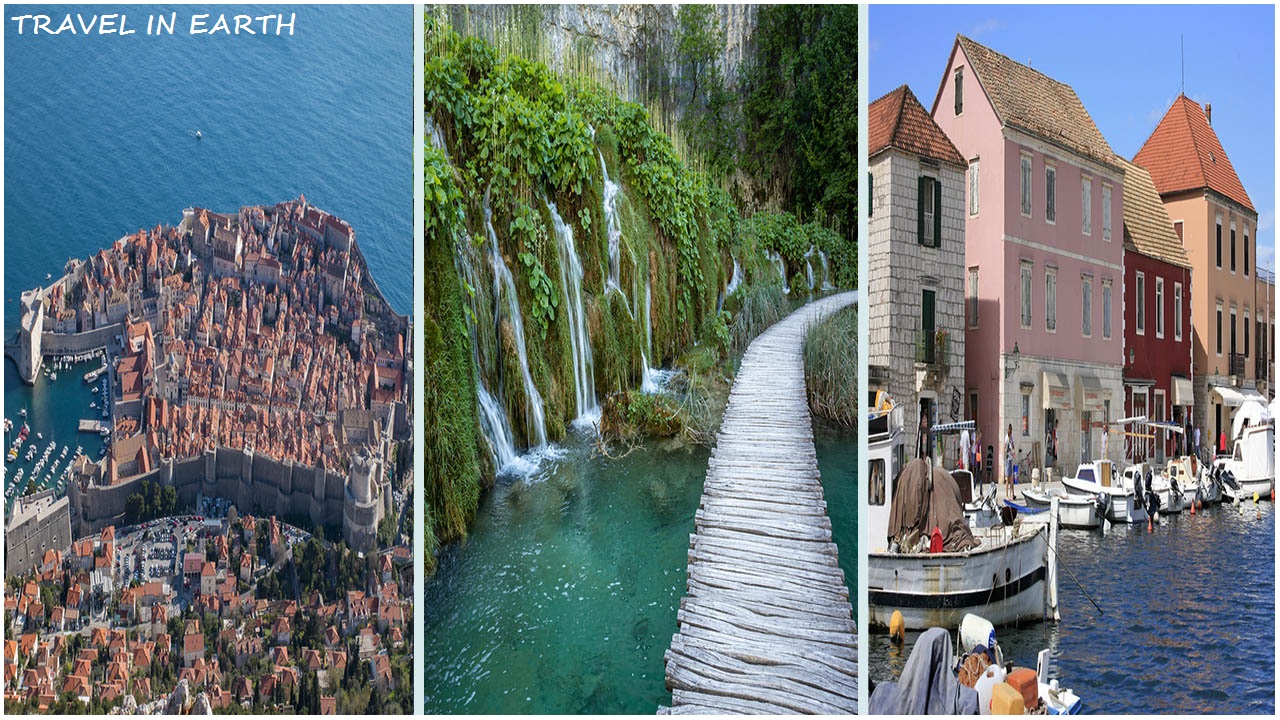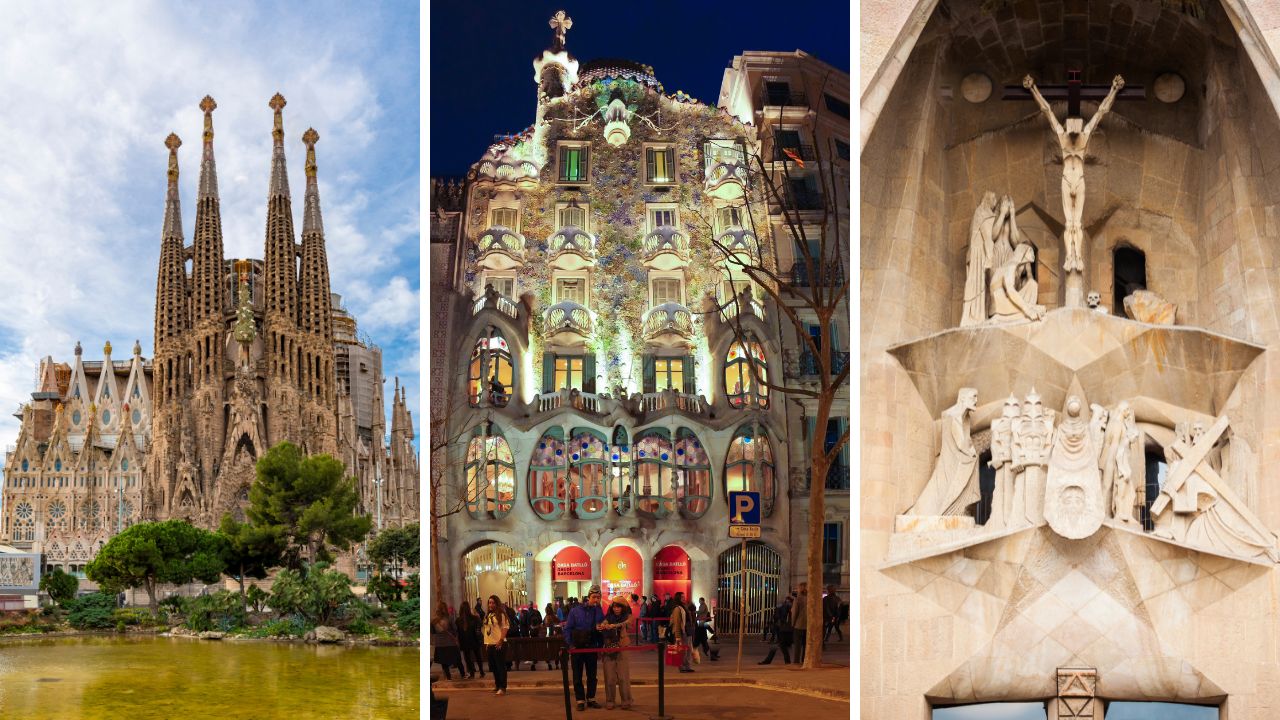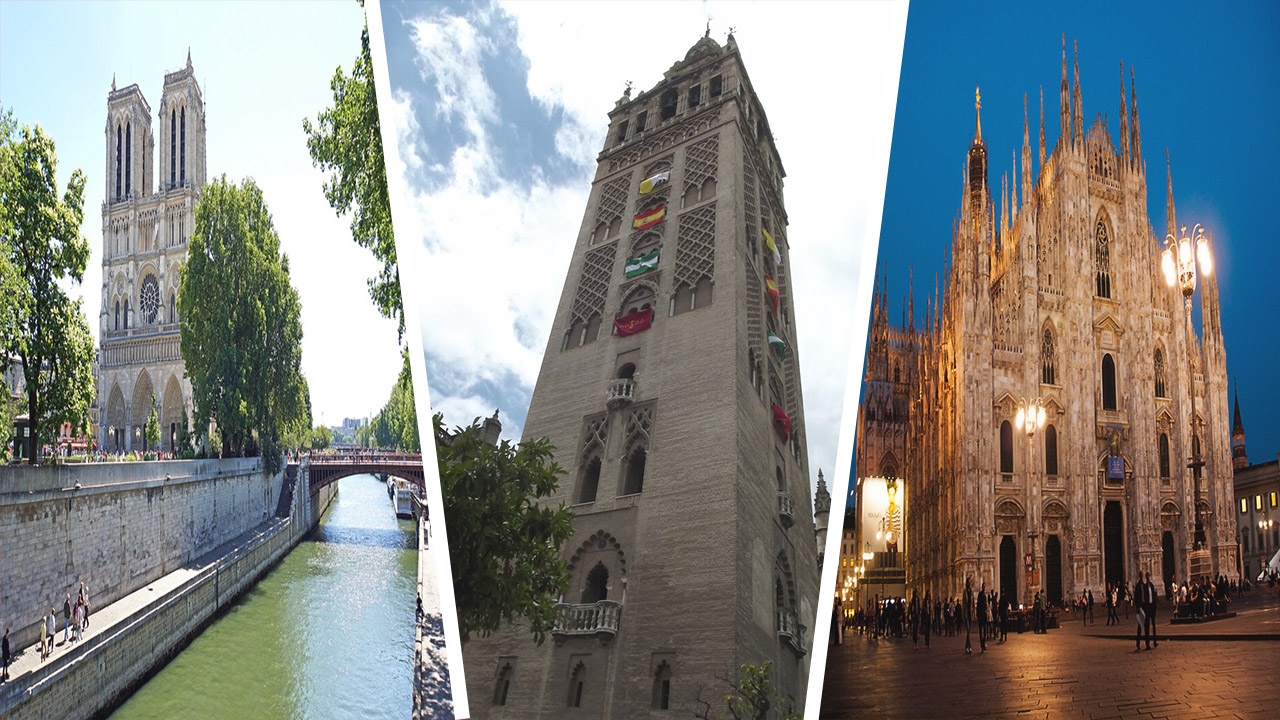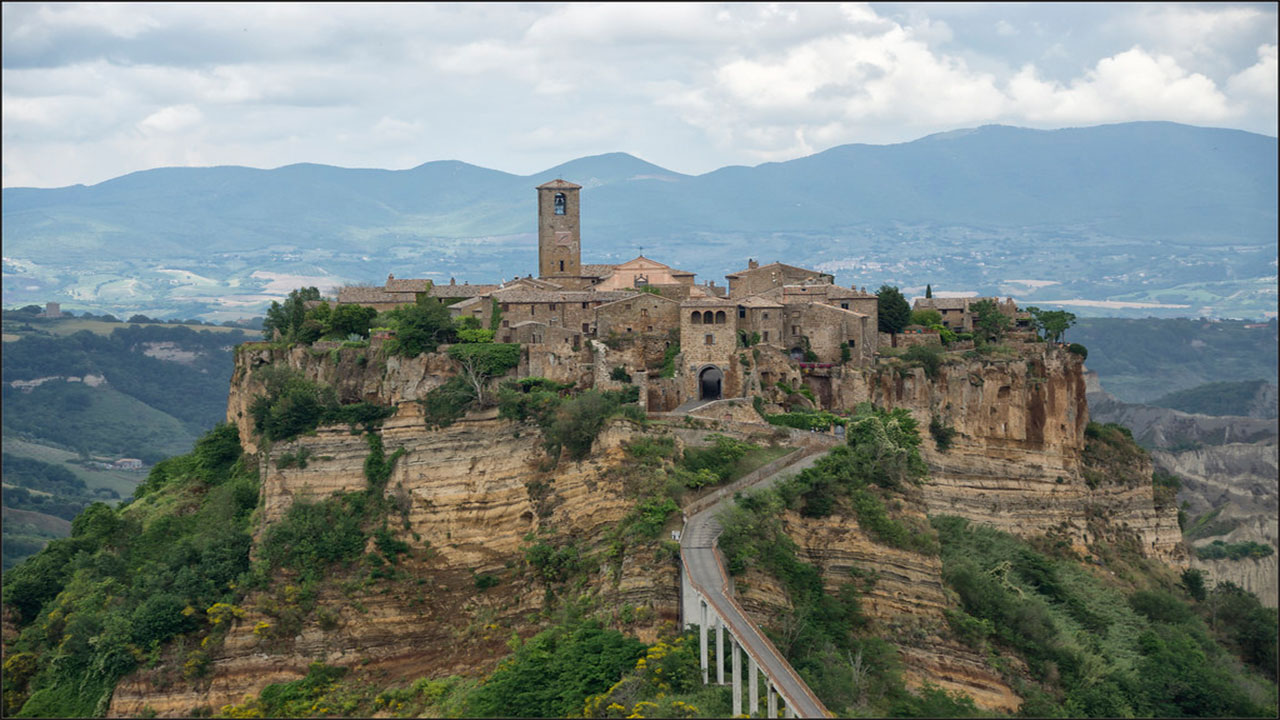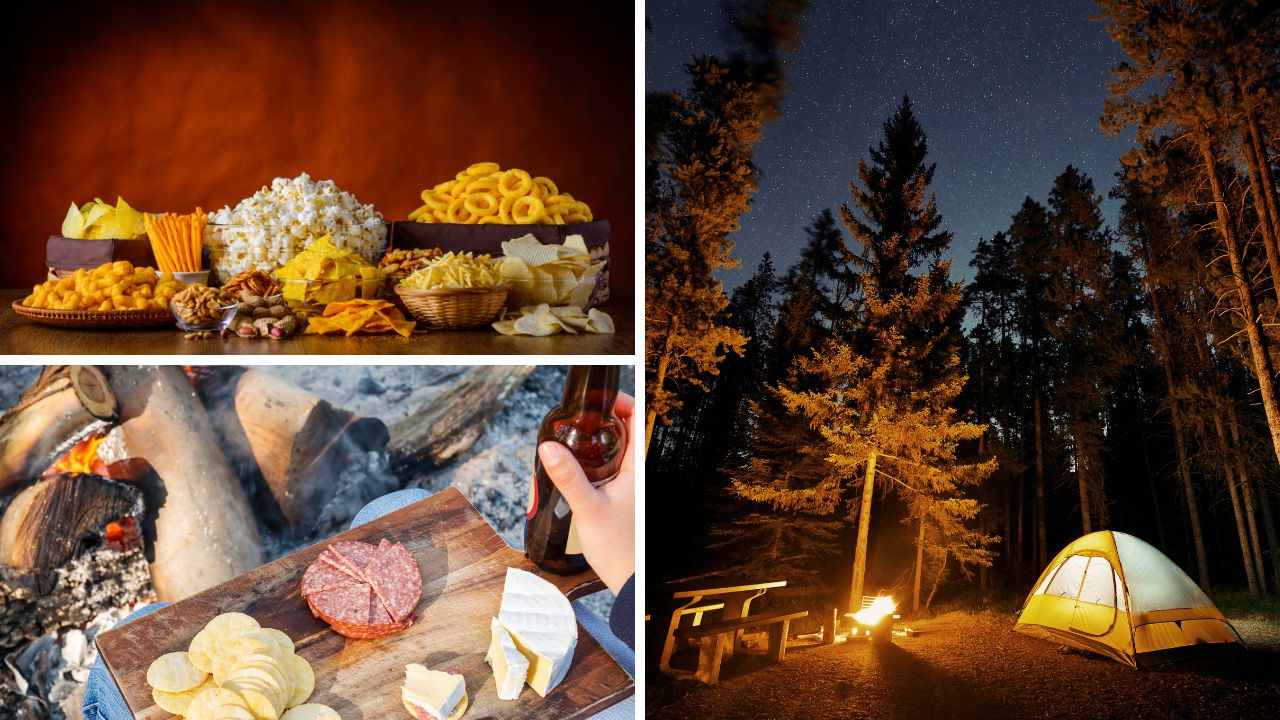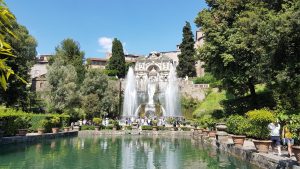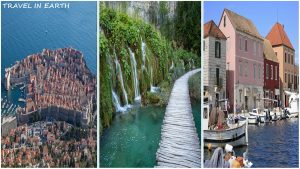Portugal, a country steeped in history and blessed with natural beauty, will continue to captivate travelers from around the globe in 2024. This sun-kissed land on the western edge of the Iberian Peninsula offers an incredible diversity of experiences, from its bustling cities to serene countryside, from golden beaches to verdant wine regions, and from historic monuments to cutting-edge cultural scenes.
In this comprehensive guide, we’ll take you on a journey through the 10 best places to visit in Portugal in 2024. We’ll delve into the unique characteristics of each destination, provide practical travel tips, and highlight the latest developments that make these places especially worth visiting this year.
Before we dive into the specific destinations, let’s take a moment to understand why Portugal has become such a popular travel destination:
- Rich History: With over 900 years of history as a nation, Portugal offers a wealth of historical sites and cultural treasures.
- Diverse Landscapes: From the rugged Atlantic coast to the rolling hills of the interior, Portugal’s landscapes are varied and stunning.
- Excellent Cuisine: Portuguese cuisine is gaining global recognition for its fresh seafood, hearty stews, and delectable pastries.
- Warm Hospitality: The Portuguese are known for their friendly and welcoming nature, making visitors feel at home.
- Affordable Travel: Compared to many Western European countries, Portugal offers excellent value for money.
- Climate: With over 300 days of sunshine a year in many regions, Portugal is a year-round destination.
Now, let’s explore the 10 best places to visit in Portugal in 2024.
1. Lisbon: The Vibrant Capital
Lisbon, Portugal’s capital and largest city, is a mesmerizing blend of old-world charm and modern innovation. Built on seven hills overlooking the Tagus River, Lisbon offers breathtaking views, historic neighborhoods, and a thriving cultural scene.
Key Attractions:
- Belém Tower: This 16th-century fortification is a prime example of Manueline architecture and a UNESCO World Heritage site.
- Jerónimos Monastery: Another UNESCO site, this monastery is a masterpiece of Manueline-style architecture.
- São Jorge Castle: Offering panoramic views of the city, this Moorish castle is a must-visit.
- Time Out Market: A food hall featuring some of Lisbon’s best chefs and restaurants.
- LX Factory: A trendy complex of shops, restaurants, and creative spaces in a former industrial area.
Neighborhoods to Explore:
- Alfama is the oldest district in Lisbon, known for its narrow streets and Fado music venues.
- Bairro Alto is the city’s bohemian quarter, famous for its nightlife.
- Chiado is an elegant shopping district with historic cafes and theaters.
What’s New in 2024:
- Lisbon continues to be a hub for digital nomads and startups. The city has invested in improving its digital infrastructure, making it even more attractive for remote workers.
- Lisbon continues to host the Web Summit, one of the largest tech conferences in the world, drawing thousands of visitors and elevating the city to the forefront of tech innovation.
- Several new museums have opened, including the Museum of Art, Architecture and Technology (MAAT), which has quickly become a cultural hotspot.
Travel Tips:
- Use the Lisboa Card for free public transportation and entry to many attractions.
- Take a ride on the iconic Tram 28 to see many of Lisbon’s historic sights.
- Try the famous Pastéis de Belém, custard tarts that are a local delicacy.
2. Porto: The Charming Northern Gem
Porto, Portugal’s second-largest city, is a picturesque destination known for its port wine production, stunning bridges, and rich history. The city’s historic center is a UNESCO World Heritage Site, filled with narrow cobblestone streets and colorful buildings.
Must-See Spots:
- Luís I Bridge: This double-deck metal arch bridge offers stunning views of the city and the Douro River.
- Livraria Lello: Often cited as one of the world’s most beautiful bookstores, it’s said to have inspired J.K. Rowling’s Harry Potter series.
- Ribeira District: The city’s oldest neighborhood, with colorful houses and lively restaurants along the riverfront.
- Port Wine Cellars: For port wine tastings and tours, visit the renowned cellars in Vila Nova de Gaia.
- Clérigos Tower: For panoramic views of Porto, climb this baroque tower.
Culinary Delights:
Porto’s food scene has been booming in recent years. In 2024, it’ll be home to several Michelin-starred restaurants, making it a paradise for food lovers. Don’t miss trying these local specialties:
- Francesinha: A hearty sandwich filled with meat and covered in melted cheese and spicy sauce.
- Tripas à moda do Porto: A traditional tripe dish that gave Porto residents their nickname, “tripeiros.”
- Port wine: Visit the cellars in Vila Nova de Gaia to taste this famous fortified wine.
What’s New in 2024:
- The Porto Innovation Hub has expanded, showcasing the city’s commitment to technology and entrepreneurship.
- Several new boutique hotels have opened in restored historic buildings, offering unique accommodation options.
- The Porto.CARD has been upgraded to include more attractions and discounts, making it an even better value for visitors.
Travel Tips:
- Use the efficient metro system to get around the city.
- Take a Douro River cruise for a different perspective of the city.
- Visit during the São João Festival in June for an unforgettable cultural experience.
3. Algarve: Sun, Sea, and Sand
The Algarve, Portugal’s southernmost region, is renowned for its stunning coastline, golden beaches, and picturesque fishing villages. It’s a paradise for beach lovers, golfers, and those seeking a relaxed Mediterranean lifestyle.
Top Beaches:
- Many people consider Praia da Marinha to be among the world’s most beautiful beaches.
- Benagil Cave is a stunning sea cave with a hole in its ceiling, accessible by boat or kayak.
- Praia da Falésia: A long stretch of beach backed by distinctive red cliffs.
- Praia do Camilo: A small, secluded beach near Lagos, accessible via a wooden staircase.
Beyond the Beaches:
While the Algarve is famous for its coastline, there’s much more to explore:
- Golf: The region has a plethora of world-class golf courses. In 2024, it will continue to be a top destination for golf enthusiasts.
- Ria Formosa Natural Park is a coastal lagoon system home to diverse bird species and beautiful hiking trails.
- Historic towns: Visit Tavira, Silves, and Lagos for a dose of history and traditional Portuguese architecture.
- Water parks are great for family fun, with some of Europe’s largest water parks located in the region.
Culinary Experiences:
The Algarve is known for its fresh seafood and traditional dishes. Don’t miss:
- Cataplana: A seafood stew cooked and served in a distinctive copper pan.
- Piri-piri chicken: grilled chicken with a spicy chili sauce.
- Fig and almond sweets: traditional Algarvian desserts.
What’s New in 2024:
- The region has made significant strides in sustainable tourism, with many resorts and attractions implementing eco-friendly practices.
- A new marine life rehabilitation center has opened, offering visitors a chance to learn about local marine conservation efforts.
- The Algarve has been developing its cycling infrastructure, with new bike paths connecting coastal towns.
Travel Tips:
- Rent a car to explore the less-touristy inland areas and small coastal villages.
- Visit in the spring or autumn for pleasant weather and fewer crowds.
- To explore the stunning coastline from the water, try stand-up paddleboarding or kayaking.
4. Sintra: A Fairy Tale Comes to Life
Just a short trip from Lisbon, Sintra feels like stepping into a fairy tale. This small town, nestled in the hills of the Serra de Sintra, is known for its romantic palaces, lush gardens, and mystical atmosphere.
Must-Visit Attractions:
- Pena Palace: This colorful palace, perched atop a hill, is a prime example of 19th-century Romantic architecture.
- Quinta da Regaleira: A mystical estate with underground tunnels, wells, and beautiful gardens.
- Castle of the Moors: a 9th-century castle offering panoramic views of the region.
- Sintra National Palace: The best-preserved medieval royal palace in Portugal.
- Monserrate Palace: A stunning villa combining Gothic, Indian, and Moorish architectural styles.
Natural Beauty:
Sintra’s unique microclimate creates a mystical atmosphere, with frequent mists adding to the enchanting scenery. The town and its surrounding cultural landscape are a UNESCO World Heritage Site.
- Cabo da Roca is the westernmost point of continental Europe, offering dramatic coastal views.
- Sintra-Cascais Natural Park is a protected area with diverse landscapes, from beaches to forests.
Literary Connections:
Over the centuries, Sintra has inspired numerous writers and artists.
- Lord Byron called it a “glorious Eden” in his poem “Childe Harold’s Pilgrimage.”
- The Portuguese poet Luís de Camões mentioned Sintra in “Os Lusíadas,” Portugal’s national epic.
What’s New in 2024:
- Sintra has implemented eco-friendly transportation options to help preserve its natural beauty. Electric tuk-tuks and bikes are now widely available for tourists.
- A new interactive museum has opened, showcasing the town’s rich history and literary connections.
- The Sintra Music Festival has expanded, attracting world-class classical musicians to perform in the town’s historic venues.
Travel Tips:
- Buy a combined ticket for multiple attractions to save money.
- Wear comfortable shoes, as there’s a lot of walking and climbing involved.
- Visit either early in the morning or late in the afternoon to avoid the midday crowds.
5. Madeira: The Pearl of the Atlantic
Madeira, an archipelago off the northwest coast of Africa, is known as the “Pearl of the Atlantic.” Its main island, also called Madeira, offers stunning natural beauty, a pleasant year-round climate, and unique experiences for visitors.
Highlights:
- Funchal is the capital city, known for its harbor, botanical gardens, and historic sites.
- Levada walks: unique hiking trails alongside water channels that crisscross the island.
- Monte Palace Tropical Garden: A beautiful garden showcasing exotic plants from around the world.
- Cabo Giro Skywalk: One of Europe’s highest cliff skywalks, offering breathtaking views.
- Pico do Arieiro is the third-highest peak on the island, offering stunning views above the clouds.
Natural Wonders:
- Laurissilva Forest: A UNESCO World Heritage Site, this prehistoric forest covers about 20% of the island.
- Volcanic pools: natural swimming pools formed by volcanic activity, like those at Porto Moniz.
Cultural Experiences:
- New Year’s Eve fireworks: Madeira’s fireworks display holds a Guinness World Record for the largest display.
- Madeira Wine: Visit local wineries to taste this famous fortified wine.
- Flower Festival: Held in spring, this colorful event celebrates the island’s floral diversity.
Adventure Activities:
Madeira has become increasingly popular for adventure sports.
- Canyoning: Explore the island’s rugged terrain and waterfalls.
- Paragliding: Soar over the dramatic landscapes.
- Surfing and windsurfing: Particularly good conditions can be found in the north of the island.
What’s New in 2024:
- Madeira has been investing in its digital nomad infrastructure, with new co-working spaces and long-stay accommodation options.
- A new marine reserve has been established, offering opportunities for sustainable diving and marine life observation.
- The island has expanded its network of hiking trails, including new routes that connect different parts of the island.
Travel Tips:
- Use the cable car in Funchal for great views and easy access to Monte.
- Try the traditional toboggan ride from Monte to Funchal.
- Book a whale- and dolphin-watching tour for a chance to see these magnificent creatures.
6. Douro Valley: Wine Country Paradise
The Douro Valley, one of the oldest wine regions in the world and a UNESCO World Heritage Site, is known for its stunning landscapes, world-class wines, and rich cultural heritage.
What to do:
- Take a river cruise. See the valley from a different perspective on a traditional rabelo boat.
- Visit wine estates (quintas): many offer tours, tastings, and even accommodation.
- Enjoy scenic train rides. The railway line from Porto to Pocinho offers breathtaking views.
- Explore charming villages: Visit places like Pinhão, known for its beautiful azulejo-tiled train station.
- Harvest experience: If visiting in September or October, participate in the grape harvest festivities.
Wine Experiences:
The Douro Valley is the home of port wine, but it also produces excellent table wines.
- Port Wine: Visit historic port houses in Vila Nova de Gaia, near Porto.
- Douro DOC Wines: Try the region’s increasingly renowned red and white table wines.
- Wine Museums: Learn about the region’s winemaking history at places like the Douro Museum in Peso da Régua.
Culinary Delights:
The Douro Valley’s cuisine is as rich as its wines.
- Bacalhau: Try one of the many dishes made with salted cod.
- Cozido à Portuguesa: A hearty stew of meats and vegetables.
- Queijo da Serra is a creamy sheep’s milk cheese from the nearby Serra da Estrela.
What’s New in 2024:
- The Douro Valley continues to be a leader in sustainable wine tourism. Many wineries now offer eco-friendly tours and tastings.
- A new cultural center has opened in Vila Real, showcasing the region’s art and history.
- Several new luxury hotels have opened, offering high-end experiences in historic quintas.
Travel Tips:
- The harvest season (September–October) is particularly special but also busy. Book accommodations in advance.
- Consider staying at a quinta for a truly immersive wine country experience.
- Combine your Douro Valley trip with visits to nearby cities like Porto and Guimarães.
7. Óbidos: Medieval Charm
Óbidos is a small medieval town that looks like it’s straight out of a storybook. Known for its well-preserved castle walls, narrow, winding streets, and whitewashed houses, it offers visitors a glimpse into Portugal’s rich history.
Don’t Miss:
- Walking the castle walls: circumnavigate the town on its fully intact medieval walls.
- Trying Ginjinha: Sample this sweet cherry liqueur, often served in a chocolate cup.
- Visiting during festivals: The chocolate festival in spring or the medieval fair in summer are particularly popular.
- Exploring the beautiful whitewashed houses: Many are adorned with colorful flowers and intricate tilework.
- Church of Santa Maria: This main church of Óbidos features beautiful 17th-century tiles.
Literary Connection:
In 2024, Óbidos will continue to be a hub for literary tourism.
- Bookshops in unique locations include a converted church (The Literary Man) and an organic market (Mercado Biológico de Óbidos).
- Folio Festival: An international literary festival held annually in October.
Nearby Attractions:
- Lagoa de Óbidos: A large coastal lagoon perfect for water sports and birdwatching.
- Buddha Eden: Europe’s largest oriental garden, located just a short drive from Óbidos.
- Berlengas Islands: A nature reserve accessible by boat from nearby Peniche.
What’s New in 2024:
- Óbidos has implemented a new augmented reality tour, allowing visitors to see how the town looked in different historical periods.
- The town has expanded its network of cycling paths, connecting Óbidos with nearby coastal areas.
- A new artisan quarter has opened, showcasing traditional Portuguese crafts and offering workshops for visitors.
Travel Tips:
- Stay overnight to experience the town after the day-trippers have left.
- Visit in the shoulder season (April–May or September–October) for pleasant weather and fewer crowds.
- Take a guided tour to learn about the town’s rich history and legends.
8. Azores: Nature’s Paradise in the Atlantic
The Azores, an archipelago of nine volcanic islands in the middle of the Atlantic Ocean, is a paradise for nature lovers and adventure seekers. Each island has its own unique character, offering diverse experiences, from lush green landscapes to volcanic wonders.
Top Activities:
- Whale Watching: The Azores is one of the world’s largest whale sanctuaries, home to over 20 different species.
- Hiking: Explore trails around crater lakes, through lush forests, and along coastal cliffs.
- Geothermal Experiences: Visit hot springs, fumaroles, and geothermal pools, especially on São Miguel Island.
- Water Sports: Try surfing, diving, or kayaking in the crystal-clear Atlantic waters.
- Exploring Picturesque Towns: Visit charming places like Angra do Heroísmo on Terceira Island, a UNESCO World Heritage Site.
Must-Visit Islands:
- São Miguel is the largest island, known for its crater lakes and botanical gardens.
- Pico is home to Portugal’s highest mountain and UNESCO-recognized vineyards.
- Faial is famous for its marina and the Capelinhos Volcano Interpretation Centre.
- Flores is known for its stunning waterfalls and lakes.
Culinary Experiences:
Azorean cuisine is unique and delicious.
- Cozido das Furnas: A meat and vegetable stew cooked underground using volcanic steam.
- Fresh Seafood: Try locally caught species like parrot fish and wreckfish.
- Queijo São Jorge is a famous cheese from the island of São Jorge.
- Pineapples and Passion Fruit: The Azores is known for its tropical fruits.
Sustainability Focus:
The Azores are leading the way in sustainable tourism.
- Renewable Energy: The islands aim to be 100% renewable energy-powered by 2030.
- Marine Conservation: Strict regulations protect the rich marine life.
- Eco-lodges: Many accommodations focus on minimizing environmental impact.
What’s New in 2024:
- A new marine research center has opened on Faial Island, offering visitors insights into ongoing conservation efforts.
- São Miguel has expanded its network of cycling paths, making it easier to explore the island by bike.
- A new inter-island ferry service has been launched, improving connectivity between the islands.
Travel Tips:
- The weather can be unpredictable. Pack layers and rain gear.
- Rent a car to explore the islands at your own pace.
- Consider island-hopping to experience the diversity of the archipelago.
9. Coimbra: The Historic University City
Coimbra, home to one of the oldest universities in Europe, is a city steeped in academic tradition and cultural heritage. Its well-preserved medieval old town and lively student population create a unique atmosphere that blends history with youthful energy.
Key Attractions:
- University of Coimbra: Founded in 1290, it’s a UNESCO World Heritage Site. Don’t miss the Baroque Library, Joanina Library.
- The Old Cathedral of Coimbra (Sé Velha) is a remarkable example of Romanesque architecture.
- Monastery of Santa Clara-a-Velha: A Gothic monastery with a fascinating history.
- Portugal dos Pequenitos: A miniature park showcasing Portuguese architecture and monuments.
- Botanical Garden of the University of Coimbra: One of Europe’s most beautiful botanical gardens.
Cultural Experiences:
- Fado de Coimbra: A unique style of fado music, traditionally performed by male university students.
- Academic Festivals: Experience the lively student traditions, especially during the Queima das Fitas festival in May.
- Museums: Visit the National Museum Machado de Castro and the Science Museum of the University of Coimbra.
Literary Connections:
Coimbra has a rich literary history:
- The city was home to famous Portuguese poets like Luís de Camões and António Nobre.
- Visit the Academic Prison, where students were once held for minor offenses, now a museum.
Culinary Delights:
- Chanfana is a traditional goat stew cooked in a clay pot.
- Pastéis de Tentúgal: Delicate pastries filled with egg cream.
- Santa Clara sweets are candies traditionally made by nuns in the local convents.
What’s New in 2024:
- The University of Coimbra has opened a new interactive museum, showcasing its 700-year history.
- A riverside regeneration project has created new public spaces and cycling paths along the Mondego River.
- Coimbra has been designated as the European Capital of Culture for 2024, with a year-long program of events and exhibitions.
Travel Tips:
- Climb the University Tower for panoramic views of the city.
- Visit during the Queima das Fitas in May to experience the city’s biggest student festival.
- Take a stroll through the Botanical Garden, one of the most beautiful in Europe.
10. Évora: The Heart of Alentejo
Évora, located in the Alentejo region, is a UNESCO World Heritage Site known for its well-preserved old town, rich history, and as a gateway to the surrounding wine country.
Must-See Spots:
- The Roman Temple of Évora, also known as the Temple of Diana, is one of the best-preserved Roman structures on the Iberian Peninsula.
- Chapel of Bones (Capela dos Ossos): A fascinating chapel decorated with human bones and skulls.
- Évora Cathedral is an imposing Gothic structure with beautiful cloisters.
- Giraldo Square is the main square and the heart of the city’s social life.
- University of Évora: Founded in the 16th century, it’s the second oldest university in Portugal.
Beyond the City:
Évora is an excellent base for exploring the Alentejo region.
- Megalithic sites: Visit the Cromeleque dos Almendres, one of the largest stone circles on the Iberian Peninsula.
- Wine tours: Explore the renowned wineries of the Alentejo region.
- Cork forests: Learn about cork production, a major industry in the area.
Culinary Experiences:
Alentejo cuisine is hearty and flavorful.
- Carne de porco à alentejana: A traditional pork and clam dish.
- Sopa de cação: A soup made with dogfish, garlic, and coriander.
- Queijo de Évora is a local sheep’s milk cheese.
- Alentejo wines are known for their full-bodied reds and crisp whites.
What’s New in 2024:
- Évora has launched a new augmented reality app, allowing visitors to see how the city looked in different historical periods.
- The city has invested in sustainable tourism initiatives, including a new network of electric bike-sharing stations.
- A new contemporary art museum has opened, showcasing works by Portuguese and international artists.
Travel Tips:
- Use Évora as a base to explore the surrounding Alentejo region.
- Visit in the spring or fall for pleasant weather and fewer crowds.
- Take a guided tour to fully appreciate the city’s rich history and hidden gems.
Conclusion
Portugal offers a diverse range of experiences for travelers in 2024, from the bustling streets of Lisbon and Porto to the tranquil beauty of the Douro Valley and the Azores. Whether you’re interested in history, nature, food and wine, or simply relaxing on beautiful beaches, Portugal has something for every type of traveler.
As you plan your trip, keep in mind the unique character of each destination:
- Lisbon and Porto offer vibrant city experiences with rich history and modern innovation.
- The Algarve and Madeira are perfect for beach lovers and those seeking a mix of relaxation and adventure.
- Sintra and Óbidos transport you to a fairy-tale world of castles and palaces.
- The Douro Valley and Alentejo (Évora) are paradises for wine enthusiasts and food lovers.
- The Azores offer unparalleled natural beauty and outdoor adventures.
- Coimbra provides a unique blend of academic tradition and youthful energy.
Remember to respect local customs and embrace sustainable travel practices to help preserve these beautiful destinations for future generations. Portugal’s commitment to sustainable tourism is evident across the country, from eco-friendly accommodations to conservation initiatives.

